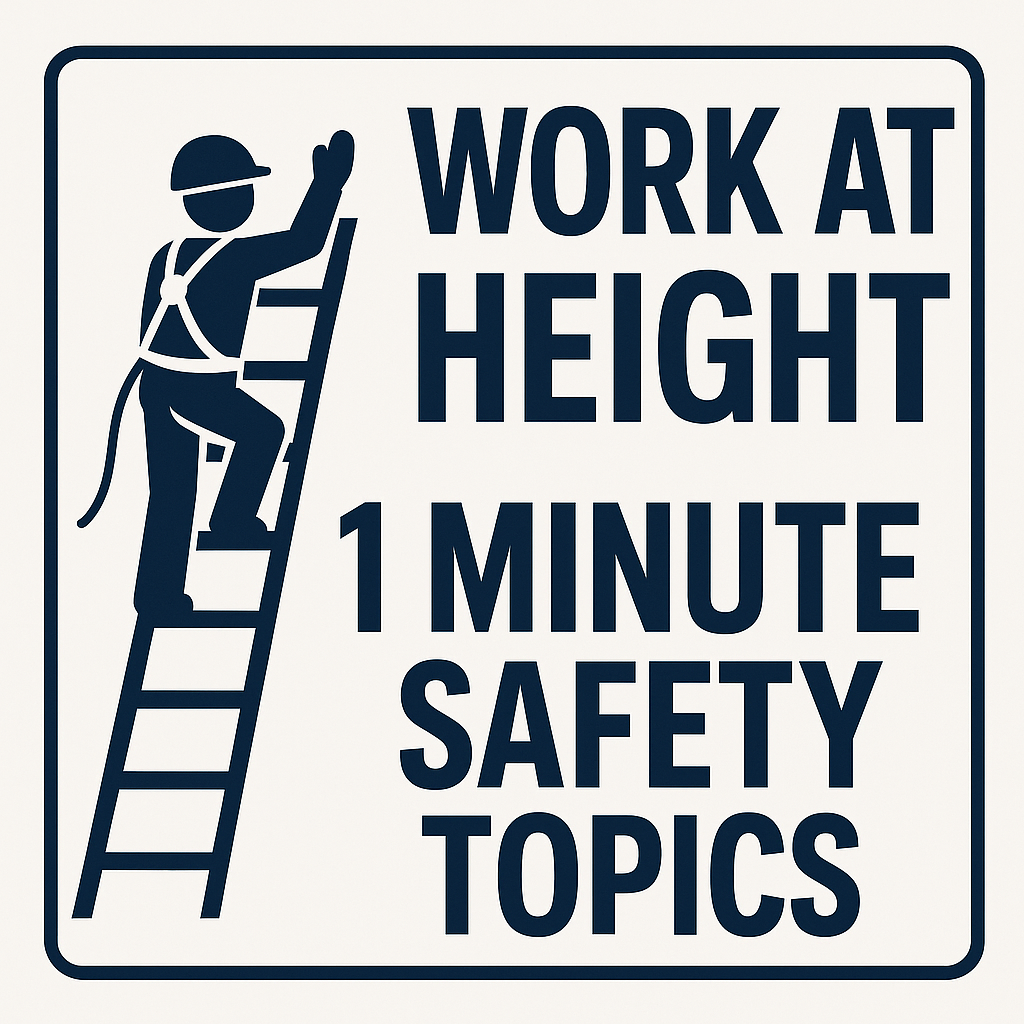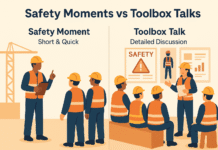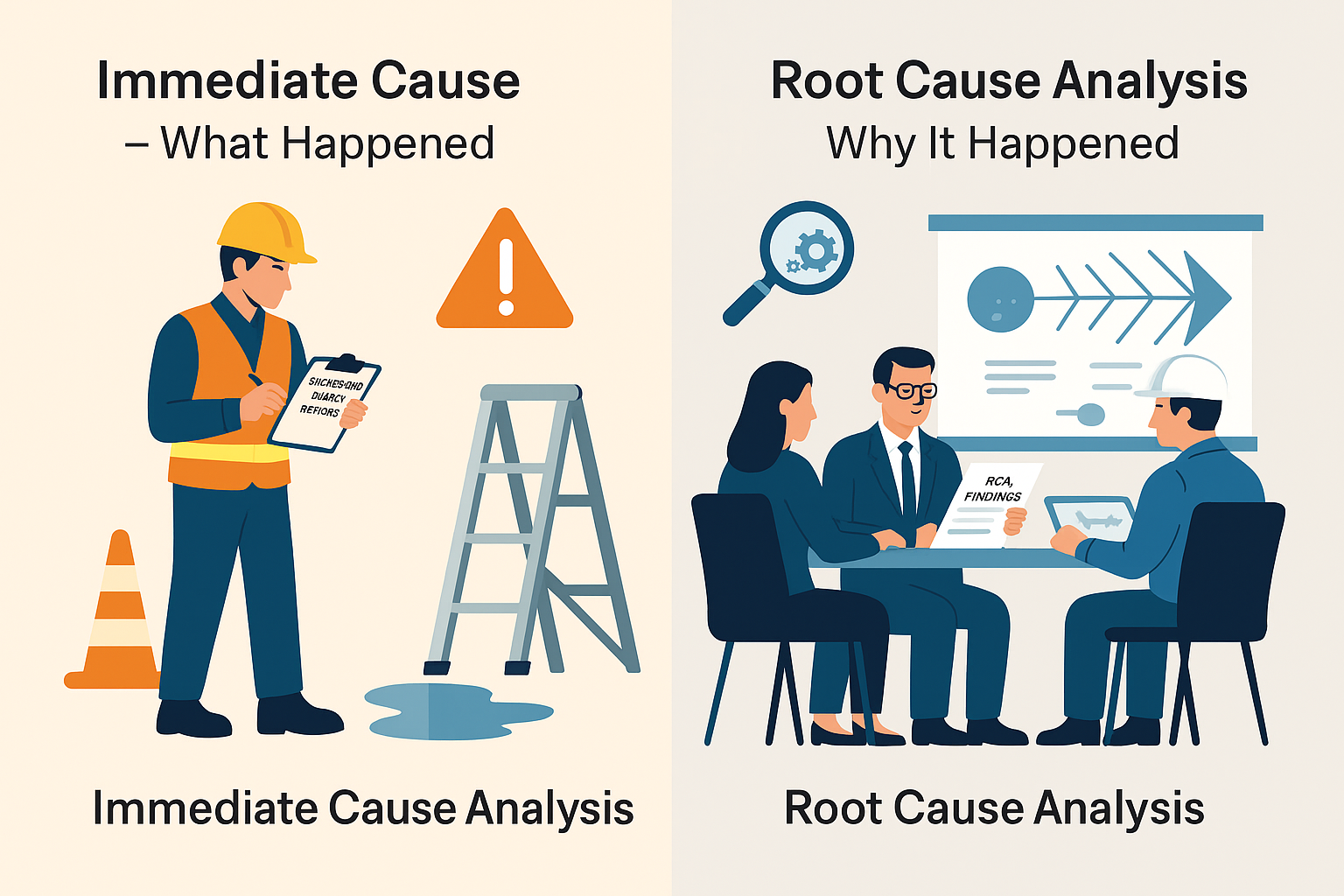
Work at Height 1 Minute Safety Topics
Have you ever noticed how one small reminder can prevent a big accident? That’s the power of a 1-minute safety talk. When it comes to working at height, even a few seconds of carelessness can be life-threatening. That’s why daily, quick safety reminders are essential.
What Are 1-Minute Safety Topics?
A 1-minute safety topic is a short, sharp discussion that highlights one specific safety practice. Think of it as a “safety shot”—a quick dose of awareness before the real work begins. These talks are not lectures but reminders to keep safety fresh in workers’ minds.
Why Focus on Work at Height?
Work at height is one of the most hazardous activities across industries. Construction, maintenance, telecom, and oil & gas are just a few examples where employees risk falls daily. According to global statistics, falls from height remain a leading cause of workplace fatalities. This alone makes it a non-negotiable safety priority.
Benefits of 1-Minute Safety Talks
- Builds a strong safety culture – Regular talks show that safety is always a priority.
- Increases awareness – Workers are more alert to potential hazards.
- Encourages participation – Even a quick question like “What’s your PPE today?” gets people involved.
Top 10 Work at Height 1-Minute Safety Topics
Below are ten practical topics you can rotate daily. Each one can be delivered in less than 60 seconds.
Topic 1: Using Proper PPE
Remind workers to wear helmets, harnesses, safety shoes, and reflective vests. Harness lanyards should always be attached to a secure anchor point. Quick check: “Is your harness clipped in?”
Topic 2: Ladder Safety
Ladders are simple but risky tools. Emphasize the 3-point contact rule (two hands and one foot or two feet and one hand at all times). Never overreach or stand on the top rung.
Topic 3: Scaffolding Precautions
Scaffolds must be inspected before use. Workers should ensure guardrails, toe boards, and planks are secure. A 1-minute reminder can be: “Check the scaffold—secure before climb.”
Topic 4: Fall Protection Systems
Talk about lifelines, anchor points, and energy absorbers. Reinforce: “If there’s no anchor point, there’s no work at height.”
Topic 5: Weather Conditions
High winds, rain, or poor visibility make working at height dangerous. Remind workers to stop if conditions deteriorate. A line to use: “When the weather turns, safety comes first.”
Topic 6: Housekeeping at Heights
Loose tools or debris can cause slips or fall hazards. Keep platforms clean and use tool lanyards. A quick phrase: “A clean height is a safe height.”
Topic 7: Electrical Hazards
Remind everyone about overhead power lines and the safe distance rule. Always assume power lines are live unless confirmed otherwise.
Topic 8: Emergency Preparedness
If someone falls, seconds matter. Workers should know the rescue plan and how to call for help. A good reminder: “Rescue plan ready? Lives depend on it.”
Topic 9: Communication at Heights
Hand signals, radios, or spotters are crucial when working above ground. Without proper communication, confusion can lead to accidents.
Topic 10: Mental and Physical Fitness
Fatigue, stress, or distractions can impair judgment. Encourage workers to self-check: “Am I fit and focused to work at height today?”
How to Deliver 1-Minute Safety Talks Effectively
- Keep it short and simple – No lectures, just one key message.
- Use real examples – Share incidents or near misses.
- Make it interactive – Ask questions like “What hazard do you see here?”
- Rotate topics – Avoid repeating the same points daily.
Common Mistakes to Avoid
- Overloading with information – Workers forget long talks.
- Ignoring participation – Monologues won’t engage anyone.
- Lack of follow-up – A talk is wasted if not reinforced by action.
Conclusion
Work at height is risky, but 1-minute safety talks are a powerful way to protect workers. They create awareness, build habits, and prevent accidents—all in just sixty seconds. Remember, safety doesn’t always need an hour-long training session. Sometimes, a single minute can save a life.
Slips Trips and Falls Prevention TBT
Chemical Safety and Hazard Communication TBT
Hand and Power Tool Safety TBT
FAQs
1. What is the purpose of a 1-minute safety talk?
It’s a quick reminder to reinforce safety practices and keep workers alert before starting work.
2. How often should safety talks be given?
Ideally, every day before work begins, especially for high-risk activities like working at height.
3. Can workers lead 1-minute safety talks?
Yes! In fact, rotating who speaks encourages participation and ownership of safety.
4. What’s the best way to keep workers engaged?
Keep it short, use questions, share examples, and make the message relevant to their tasks.
5. Are 1-minute talks enough for safety training?
No, they complement but do not replace formal safety training and certifications.
























